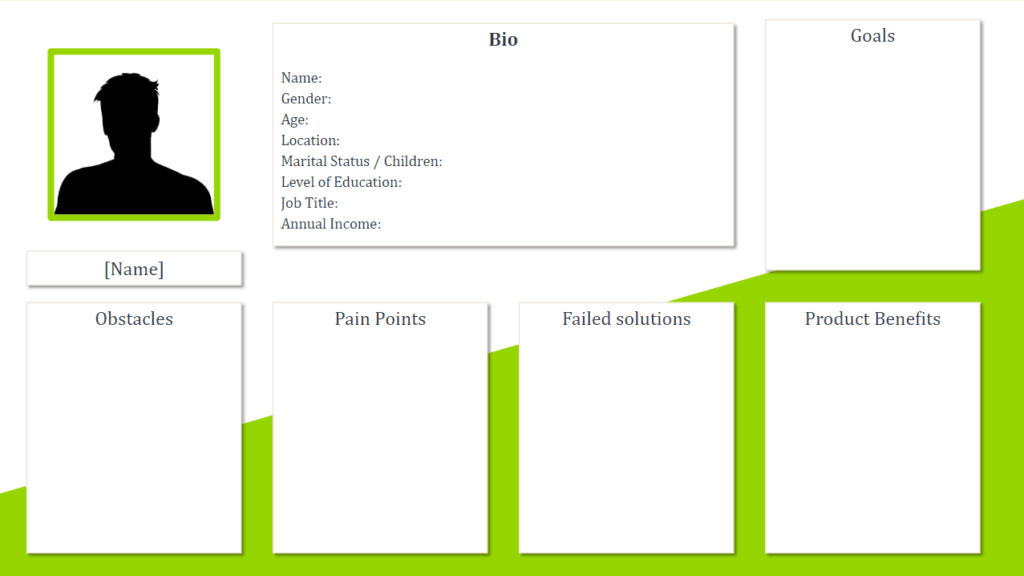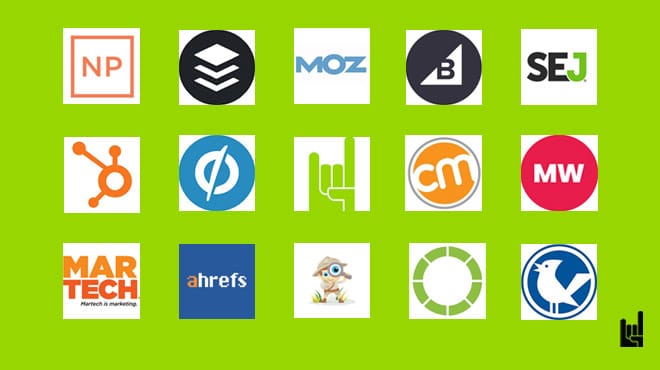Ad copywriting for Google Ads is a fusion of creative talent, solid copywriting, and scientific data.
It requires a balance between persuasive writing and data-driven analysis.
Here’s the full guide to make all this happen and get better results in your Google Ads.
Ad Copy: The 3 Different Focal Points
Googling is all about getting results on your screen. The paid ads are those that appear at the top of your screen. They are premium, after all.
The block of text in these ads is the Ad Copy.

Many professional PPC campaign managers often advise their clients to write 3 versions of the copy. These 3 test versions should be written with specific purposes and/or targets in mind.
1. Unique Selling Point (USP)
As any marketing consulting firm will tell you, everything starts with the ‘USP’. Accordingly, the first test advert’s copy should be focused on convincing your audience about this: Why should they choose your product or service over a competitor’s? You have to let your potential customer know “what’s in it for them”. A unique selling point should primarily communicate the value of the product or service your business provides.
2. Pain point
Your second test advert should focus on your audience’s pain point. A pain point simply means the specific problem that prospective customers of your product or services are experiencing. By knowing a customer’s pain point you are acknowledging their problem. Accordingly, you are able to package your product or service as the solution. Broadly speaking, pain points can be grouped into four categories:
- Financial pain points
- Productivity pain points
- Process pain points
- Support pain points
Framing pain points like this can help you position your product or service as the solution to the customer’s problems.
3. Sentiment
The third test advert is perhaps the most interesting test of all. Think of it as a bit of a wild card. You want this version of ad copy to be entirely different from the two previous ones. Thus, you might want to push the boat out on the content accompanying your advert here.
You can try using some humor or even try to elicit some anger or disgust. You want to use this third test to run with some of your wackier ideas and see if they have any legs.
Ad Copy Performance
It’s all well and good having your 3 test versions ready to rumble. But how do you work out what is and isn’t working? Following a flowchart, or list, such as the one below, is a fantastic way to begin to understand the process of uncovering what makes a successful or unsuccessful advertisement:
- What do you want the adverts to accomplish? How can you possibly begin to understand what is and isn’t converting if you haven’t clearly identified the objective of your advertisement campaign? Are you hoping your campaign will generate sales? Bring you more leads? Increase your click-through rate (CTR)? What is your KPI here? Realistically, you need to know what your goal is before you can even begin to try and test the results.
- How Will You Define Success? After you set your goal your next concern should be how you are going to measure that goal. How will you define whether or not your advert has reached that goal? Will you define the advert’s success by how many clicks it generates? What if you see a pick-up in sales that correlates with your CTR? Without defining what success looks like, you will be hard-pressed to see it when it happens.
- What software do you intend to use to measure your results? There is a multitude of viable options for you to choose from when it comes to measuring the results of your Google Ads campaign. I’d recommend using either Google Ads Stats or Google Analytics to keep track of your campaign. However, the most important thing for your testing process is that you maintain consistency. It is integral to your campaign that you use the same software throughout the entire process of testing your adverts. If not, differences in software and the data collected may skew your results leading you in the wrong direction.
💡 Read: Top 10+1 Reporting Tools for Your Business in 2024

Testing the Ad
Now that you know how you will measure your ad’s performance, it’s a good time to get down to the nitty-gritty.
1. Identify your variables
What are you going to change to get the desired results from your advertisement campaign?
Make sure you’re not altering too many variables between tests so you don’t lose track.
Here are some suggestions for what you could change within your advertisement:
-
- Your advert’s headline content
- Your advert’s call-to-action content
- What you are offering customers
- The display url
- Capitalisation and punctuation
- How you’re portraying your competitive advantage to consumers
- Where the advert is directing the audience & where the audience lands
- The time of day your advert is being displayed to consumers
- The type of devices your adverts are being displayed on
- The type & number of keywords your advert is utilising
- The extensions that appear alongside your advert (more on that later)
2. Test your variations
It’s now time to implement the three different adverts you’ve initially developed. Remember, the first test advert should be geared towards informing the consumer why they should be choosing your product/service over a competitor. The second test advert should be targeting your audiences’ Pain-Points, informing them why your product/service is the solution. The third, and final, test advert should be a wild card where you can experiment with a multitude of ideas and see if any of them prove effective.
3. How long will your test run?
Conventional industry wisdom seems to agree that any test should run for at least 7 days. Your test needs to run long enough for you to be able to achieve statistical significance from the data you have managed to gather. Statistical significance is basically a mathematical term for being able to prove that a certain statistic is reliable. However, don’t worry if you don’t have a solid understanding of calculus and statistics. There are plenty of online apps you can use to make the necessary calculations for your A/B testing.
4. How will you utilize the data you’ve collected?
Of course, if it’s clearly obvious that one advert is outperforming the others by a significant margin, you will implement the higher-performing advertisement in your campaign. However, if there’s not much difference, you’ll have to decide what step to take next. Your options include:
-
- Keeping all the adverts running to collect more data
- Keeping the best-performing adverts running while ending the test
- Replacing a number of adverts and re-trying the testing process
Ad Copy Tips
1. Identify your customer
Although this advice is brilliant, working out situationally what the correct emotional trigger is for your advert’s copy can be a difficult task. However, by following these three steps, it should become easier to work out which emotional response to target.
- Identify your customer: What does your customer do for a living? Are they urban professionals? Do they work in the Service industry, or perhaps they are unemployed? Where do they live? What are their circumstances? You must have your target audience in keen focus, especially if you want to select the correct emotional triggers to engage them.
- Choose your persona: If you’ve identified your advertisement’s target audience, you then have to assess which buyer persona you should adopt. Perhaps you could be the comedian, drawing focus on the consumers’ Pain-Point through humor. Or perhaps you could utilize a Hero/Villain dynamic, highlighting the unfairness of the industry you work in for consumers, by pretending to be the bad guy? There are thousands of potential personas you could adopt.

Buyer Persona Template - Write in your chosen persona: You must write your advert’s entire copy from the standpoint of your adopted persona. “To generate variations quickly, consider using an AI rephraser. That said, editing will most certainly be required so that the final ad copy aligns with your brand voice.”Doing so will create a narrative that will elicit the emotional responses you are chasing. Hopefully, this will lead you to a click on your advert and ultimately a conversion.
2. Use emotional triggers
Using emotional triggers in your ad copy is one of the better ways to elicit a reaction. It’s essential that you are unperturbed when it comes to using emotional triggers to garner a response from your adverts. Emotional responses will always generate the vast majority of clicks. And so, you must learn how to use those triggers effectively in your advert’s copy.
In his best-seller book, Trust Me, I’m Lying: Confessions of a Media Manipulator, Ryan Holiday goes into staggering detail about how he’s been able to use and manipulate the emotional responses of his audiences to generate both clicks and page-views for his clients. According to Holiday:
“A powerful predictor of whether content will spread online is…the degree of positive or negative emotion a person is made to feel.”
Holiday specifically believes that the best way to sell a product and get people to pay attention is to take things that people are emotionally passionate about and attach them to the product or service in the customer’s mind.
“All it takes is the right frame, the right angle, and millions of readers will willingly send your idea or image or ad to their friends, family and co-workers on your behalf.”
3. Aim local audiences
As just mentioned, you want to properly identify your target audience. You want to have a clear image of the sort of person you want your advertisement to appeal to. An important factor when considering audience targeting is the potential customer’s location. Generally speaking, you will likely have success with your Google Ads campaign if you gear your campaign towards a local market rather than a broader (inter)national campaign.
Make sure your copy and headline feature numerous reference location-specific details. Such details include street names, restaurants, bars, and other venues. This will help to tailor your product, or service, to local consumers and help generate interest in your advert. Additionally, making sure your advert includes a local telephone number, rather than a 1-800 number, or similar, can mean higher conversion rates!
4. Use natural & regular keywords
The complexities of Google’s algorithm are one of the world’s best-kept secrets. However, what we do know is that Google’s algorithm significantly utilizes keywords to ensure that relevant searches are returned to their customers’ search queries. Accordingly, when writing a copy ad, you need to make sure that your content contains highly searched and relevant keywords.
Google Ads features a metric known as Quality Score. Quality Score is used to assess the relevance and quality of your PPC advertisements. It is also used to determine your CPC, or how much you are charged every time someone clicks your advert. If you have stuffed your adverts with keywords, and the content seems irrelevant to the landing page the advert leads to, your Quality Score will be damaged. As a result, you may end up paying far more than your competition does to be advertised on Google.

That’s why when you are writing copy for your adverts you want to make sure that keyword usage is natural. A better practice is to try and mirror the searcher’s queries. By parroting the searcher’s query within your advert copy, you’ll be letting your potential audience know that they’re in the right place.
Furthermore, the more conversions you make by providing relevant and well-written content in your advertisements, the higher your Quality Score will be. Also, a higher Quality Score means paying less to Google for the same result.
5. Clever & clear copy
There’s a fine line to walk between ensuring your advert’s copy is clear but also clever and engaging. One of the mantras that are repeated again and again in advertising circles is: make sure your visitors understand what your product/service is.
Accordingly, that’s why your advert’s copy shouldn’t be dull, too formal, or overly descriptive. It’s important not to miss out on opportunities. Differentiate your business and its services from the competition. Otherwise, your offerings just blend in with the mass offered by your competitors. And one way to generate this differentiation is by adding flair and personality to your ad copy.
6. Call to Action
At the end of the day, you’re likely choosing to run advertisements on Google with the intention of encouraging more people to undertake a specific action. If you are like most, that action is often making a purchase. For others, it could be subscribing to a digital newsletter or filling in a form. However, regardless of the action, you should include the action in your ad copy. You should strive to let your audience know exactly what it is you want them to do.
For example, take a look at this ad copy:
“Explore our fitness programs.”
And now this copy:
“Join today and start your 7-day free trial! Click to begin your fitness journey.”
By letting your audience know what it is you want them to do you can ideally refine your adverts audience. By doing this, you’ll often discourage people, who importantly have no interest in completing the action you want from clicking on your link.
What’s more, this will save you some money as well because you will have less wasted clicks on your adverts.
Conclusion
Hopefully, you now have a better idea of how you are going to write a better ad copy in your next Google ad.
And if you need any help with ad copy, PPC, or performance marketing, contact us here and let us know!
Was this article useful?

I write for GrowthRocks, one of the top growth hacking agencies. For some mysterious reason, I write on the internet yet I’m not a vegan, I don’t do yoga and I don’t drink smoothies.



